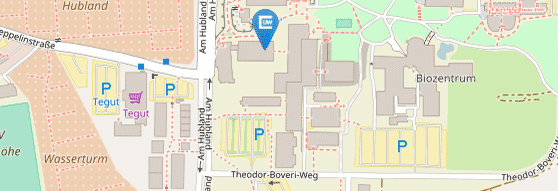Prof. W. Nau: "The Chaotropic Effect as an Assembly Motif in Chemistry"
| Date: | 11/27/2023, 5:15 PM - 6:15 PM |
| Category: | Vorlesung |
| Location: | Hubland Süd, Geb. C3 (Zentralbau Chemie), HS C |
| Organizer: | Universität Würzburg |
| Speaker: | Prof. Dr. Werner Nau |
Organisch-chemisches Kolloquium
The Institute of Organic Chemistry invites to the lecture of
Prof. Dr. Werner Nau, Constructor Universität, Bremen, Deutschland
who will be talking about
"The Chaotropic Effect as an Assembly Motif in Chemistry"
Abstact:
Following up on scattered reports about interactions of conventional chaotropic ions (e.g., I−, SCN−, ClO4−) with macrocyclic host molecules, biomolecules, and hydrophobic neutral surfaces in aqueous solution,[1] the chaotropic effect has recently emerged as a generic driving force for supramolecular assembly, orthogonal to the hydrophobic effect. The chaotropic effect becomes most effective for very large ions that extend beyond the classical Hofmeister scale, and that can be referred to as superchaotropic ions (e.g., borate clusters and polyoxometalates). In this OC colloquium, we present a continuous scale of water-solute interactions (Figure 1) which includes the solvation of kosmotropic, chaotropic, and hydrophobic solutes,[2] as well as the creation of void space (cavitation). Recent examples for the soft-matter association of chaotropic anions to hydrophobic macrocyclic [3-7] and biological binding sites, lipid bilayers, colloids,[8] and surfaces are discussed, and a new application that introduces the use of superchaotropic anions in biology is reported.[9,10] Applications of the chaotropic effect in supramolecular and medicinal chemistry will be described.
Figure 1. Extended Hofmeister scale with specification of the superchaotropic, hydrophobic ionic, and superhydrophobic regions.
References
[1] Assaf, K. I.; Nau, W. M. Angew. Chem. Int. Ed. 2018, 57, 13968–13981.
[2] K. I. Assaf, W. M. Nau, Org. Biomol. Chem. 2023, 21, 6636–6651.
[3] Assaf, K. I.; Ural, M. S.; Pan, F.; Georgiev, T.; Simova, S.; Rissanen, K.; Gabel, D.; Nau, W. M. Angew. Chem. Int. Ed. 2015, 54, 6852–6856.
[4] Assaf, K. I.; Suckova, O.; Al Danaf, N.; von Glasenapp, V.; Gabel, D.; Nau, W. M. Org. Lett. 2016, 18, 932–935.
[5] Assaf, K. I.; Gabel, D.; Zimmermann, W.; Nau, W. M. Org. Biomol. Chem. 2016, 14, 7702–7706.
[6] Assaf, K. I.; Begaj, B.; Frank, A.; Nilam, M.; Mougharbel, A.; Kortz, U.; Nekvinda, J.; Gruner, B.; Gabel, D.; Nau, W. M. J. Org. Chem. 2019, 84, 11790–11798.
[7] Khlifi, S.; Marrot J.; Haouas M.; Shepard W. E.; Falaise C.; Cadot E. J. Am. Chem. Soc. 2022, 144, 4469–4477.
[8] Hohenschutz, M.; Grillo, I.; Diat, O.; Bauduin, P. Angew. Chem. Int. Ed. 2020, 59, 8084–8088.
[9] Barba-Bon, Salluce, G.; Lostalé-Seijo, I.; Assaf, K. I.; Hennig, A.; Montenegro, J.; Nau, W. M. Nature 2022, 603, 637–642.
[10] Y. Chen, A. Barba-Bon, B. Grüner, M. Winterhalter, M. A. Aksoyoglu, S. Pangeni, K. Brix, G. Salluce, Y. Folgar-Cameán, J. Montenegro, W. M. Nau, J. Am. Chem. Soc. 2023, 145, 13089–13098.


